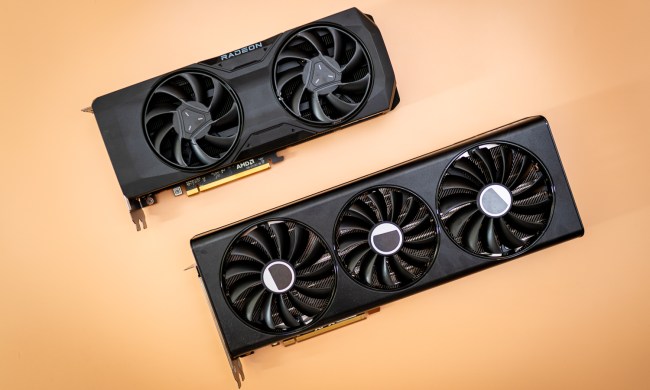Seasonic may have just tipped us off about a new AMD GPU — again. Earlier this year, the prolific power supply brand listed specs for the still unannounced RTX 50-series GPUs, and now it has a curious new AMD graphics card listed in its calculator: the RX 8800 XT, which could be among AMD’s upcoming RDNA 4 options.
At the time of writing, you can still see the RX 8800 XT among the GPU options on Seasonic’s website. There isn’t a ton of information we can pull from the calculator itself, outside of power draw. As you can see in the screenshot below, the calculator says the GPU will draw 220 watts, and that it’ll use dual 8-pin power connectors.

There’s a chance this is just a placeholder. Earlier this year, Seasonic listed several announced AMD and Nvidia GPUs in its online calculator, including the RX 7990 XTX, RX 7950 XTX, and RX 7950 XT from AMD. None of those GPUs have turned into real products. Although there’s a good chance we’ll see an RX 8800 XT — assuming AMD sticks with its normal naming conventions — that doesn’t mean Seasonic has some insider information about the GPU.
Unlike the previous calculator listing, however, we’re very close to the launch of RDNA 4 graphics cards. AMD has reiterated that its next-gen GPUs will arrive in the first quarter of 2025. That likely means we’ll see an announcement at CES in January. AMD hasn’t confirmed these plans, of course, but the timeline makes sense given AMD’s typical release schedule and the confirmation that RDNA 4 graphics cards will arrive in the first few months of next year.
On top of that, we’ve seen increased speculation around the RX 8800 XT. AMD has made it clear that it doesn’t want to play “king of the hill” with Nvidia, so it’s possible the RX 8800 XT could be its flagship offering this generation. Leakers on the Chiphell forums (via VideoCardz) claim the GPU will offer power somewhere on the level of an RTX 4080 Super.
Outside of performance, leakers claim that AMD is heavily focused on ray tracing with its RDNA 4 options. Ray tracing performance is now one of the key factors that separates the best graphics cards from the rest, and it’s an area where AMD has struggled to maintain pace with Nvidia for the past two generations.
A healthy dose of skepticism is required here, but AMD has teased its next-gen GPUs numerous times already. In its most recent earnings call, for example, AMD CEO Lisa Su said: “In addition to a strong increase in gaming performance, RDNA 4 delivers significantly higher ray tracing performance and adds new AI capabilities.”





